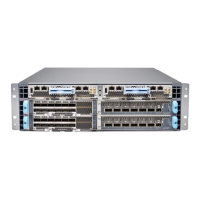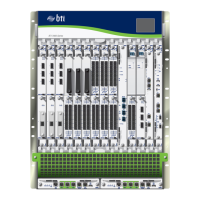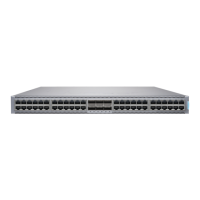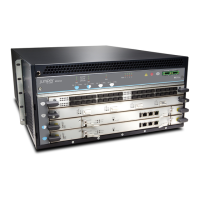Related
Documentation
Understanding Disaggregated Junos OS on page 3•
• Understanding Physical and Virtual Components on page 12
• Disaggregated Junos OS VMs on page 6
• Understanding SR-IOV Usage on page 10
• Comparing Virtio and SR-IOV on page 11
Understanding SR-IOV Usage
You can enable communication between a Linux-based virtualized device and a Network
Functions Virtualization (NFV) module using suitable hardware and single-root I/O
virtualization (SR-IOV).
When a physical device is virtualized, both physical network interface card (NIC) interfaces
and external physical switches as well as the virtual NIC interfaces and internal virtual
switches coexist. So when the isolated virtual machines (VMs) or containers in the device,
each with their own memory and disk space and CPU cycles, attempt to communicate
with each other, the multiple ports, MAC addresses, and IP addresses in use pose a
challenge.
SR-IOV extends the concept of virtualized functions right down to the physical NIC . The
single physical card is divided into up to 16 partitions per physical NIC port that correspond
to the virtual functions running at the higher layers. Communication between these virtual
functions are handled the same way that communications between devices with individual
NIC are usually handled: with a bridge. SR-IOV includes a set of standard methods for
creating, deleting, enumerating, and querying the SR-IOV NIC switch, as well as the
standard parameters than can be set.
The single-root part of SR-IOV refers to the fact that there is really only one primary piece
of the NIC controlling all operations. An SR-IOV-enabled NIC is just a standard Ethernet
port providing the same physical bit-by-bit function of any network card.
However, the SR-IOV also provides several virtual functions, which are accomplished by
simple queues to handle input and output tasks. Each VNF running on the device is
mapped to one of these NIC partitions so that VNFs themselves have direct access to
NIC hardware resources. The NIC also has a simple Layer 2 sorter function, which classifies
frames into traffic queues. Packets are moved directly to and from the network virtual
function to the VM’s memory using direct memory access (DMA), bypassing the hypervisor
completely. The role of the NIC in the SR-IOV operation is shown in Figure 6 on page 11.
Copyright © 2017, Juniper Networks, Inc.10
JDM User Guide for NFX250 Network Services Platform
